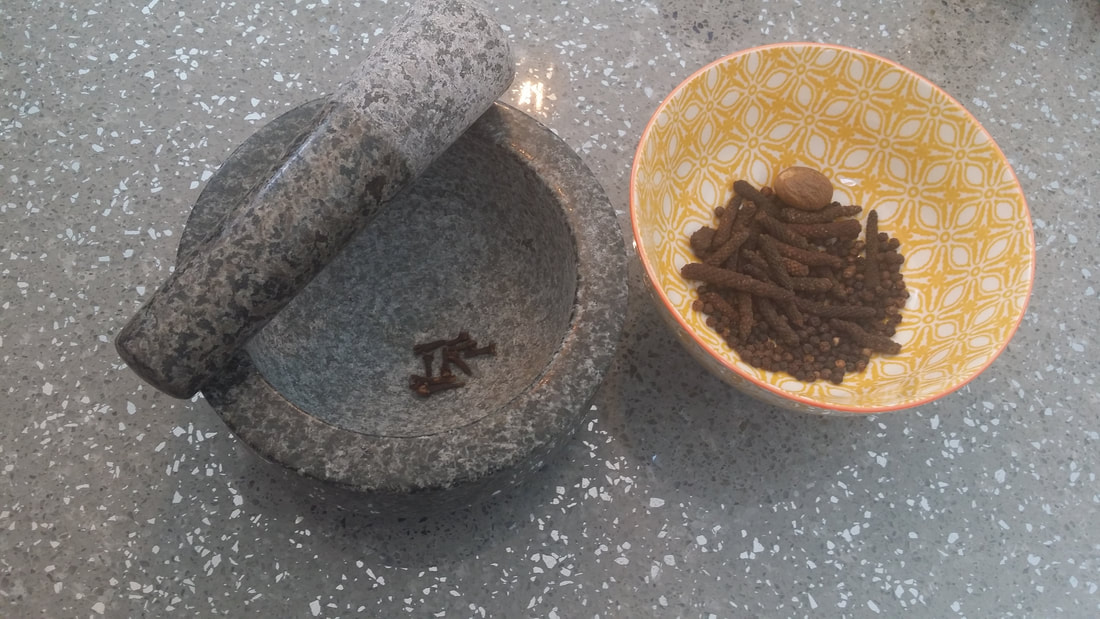|
Hello medievalists and foodies! Last Saturday, I took the recipe sauge yfarced, literally 'stuffed sage', from Forme of Cury (King Richard II’s 14th-century cookery book), and brought it to the development stage – my fancy way of saying I tried out some medieval cookery. The result was pretty scrumptious. In essence this is a medieval snack – spicy pork balls coated in fresh sage leaves and a light, crispy batter – suitable for dipping in one of the Forme of Cury’s sauces or dressings (I fancy verde sauce, a spicy and herby garlic dressing – that’s for another post), or, as in my case, drowning in tomato ketchup. Not very medieval, I know. When I posted about this on my Facebook page, a few people asked what was in the spice mix that in the original recipe is called powder fort (poudour fort: ‘strong powder’; also called poudre fort). The answer is not straight forward, as there does not exist an English medieval recipe for the mix; and, besides, most commentators feel it likely varied from kitchen to kitchen. However, there does exist a roughly contemporaneous Italian recipe for specie negre e forte per assay savore (‘black and strong spices for many sauces’) in the work known as Libro di cucina (no. LXXV). The ingredients listed there are: cloves, pepper, long pepper, and nutmeg. For my own experiment, I decided to go with these four spices. I ground 15g (½oz) black pepper corms, 15g (½oz) long peppers and ½ teaspoon of whole cloves, and combined all this with ¼ teaspoon of grated nutmeg. I used 3 teaspoons of the mix for the meat I obtained from a ham hock: just about right, I felt. Incidentally, I don’t recommend using a pestle and mortar for grinding long peppers; it’s better to use a coffee grinder, otherwise you’ll still be grinding it the following day. Black pepper corms and cloves do take well to a pestle and mortar. The flavour was earthy, warm and, obviously, peppery. I could imagine using more cloves, and perhaps a little more nutmeg, though you should know that nutmeg is toxic at certain levels, so before you experiment yourself with nutmeg, do some research on its toxicity levels: I hereby accept no liability for excessive use of nutmeg! My in-house powder fort certainly worked with pork, and I look forward to using it in other recipes, as it is commonly called for in Forme of Cury. If this post has sparked any questions, please feel free to leave a comment below, or contact me by clicking the contact button above.
2 Comments
Christopher Monk
27/3/2019 03:33:26 pm
Rubbed into pork chops... sounds a great idea. Or rubbed into a pork loin or a tenderloin or a leg. Definitely suits pork, as does the sage in the medieval recipe.
Reply
Your comment will be posted after it is approved.
Leave a Reply. |
Details
AuthorDr Christopher Monk is a medieval culture specialist working in the creative industries and heritage sector. Archives
August 2019
Categories |



 RSS Feed
RSS Feed